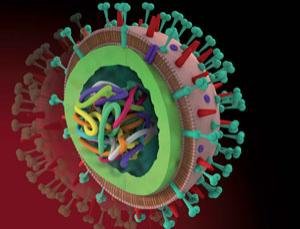China reports world's first human to human bird flu virus transmission
August 08, 2013 | Thursday | News | By BioSpectrum Bureau
China reports world's first human to human bird flu virus transmission
In the first such case reported worldwide, a Chinese father is suspected to have transmitted the novel avian influenza A (H7N9) virus to his daughter who had tended to him during the illness in early March 2013. Both the father and daughter died due to the infection in the next two months.
Though alarming, scientists conclude that the human-to-human transmission process has not been found to be very efficient as it had spared nearly two dozen close relatives who too had been in the proximity of the infected man during the same period, reported a study published by the British Medical Journal.
The study, reported by two British scientists, Dr James Rudge and Dr Richard Coker of London School of Hygiene and Tropical Medicine is based on the epidemiological work done on the spot led by Dr Ming-Hao Zhou, director of Jiangsu Province Centre for Disease Control and Prevention, Nanjing, Jiangsu and her team.
Interestingly, the daughter who provided unprotected care to her father who is suspected to have picked up the infection at the local poultry market was the first one to succumb to the virus. Her 60-year-old father died three weeks after her due to multiple organ failure induced by the virus.
The daughter had never gone to the poultry market nor had she been in touch with them in all her life. This was the reason for scientists to suspect that the virus transmission took place from human to human ( father to daughter) is one of the world's first such cases reported so far. The virus isolated from both these victims were genetically identical, confirming the transmission. Scientists had checked all the poultry, swans and other water birds in the vicinity to reconfirm the source of the infected virus.
"To our best knowledge, this is the first report of probable transmissibility of the novel virus person to person with detailed epidemiological, clinical, and virological data. Our findings reinforce that the novel virus possesses the potential for pandemic spread," the scientists wrote in BMJ.
The new strain of avian flu virus was detected in China in early 2013 and has so far infected 133 people and 43 deaths till the end of June.
The authors of the report however caution that " limited transmission between humans is not surprising but does not necessarily indicate that the virus is on course to develop sustained transmission among humans."
Dr Zhou said the " virus transmission was limited and non-sustainable as there has been no outbreak of the disease in the locality after these cases."










